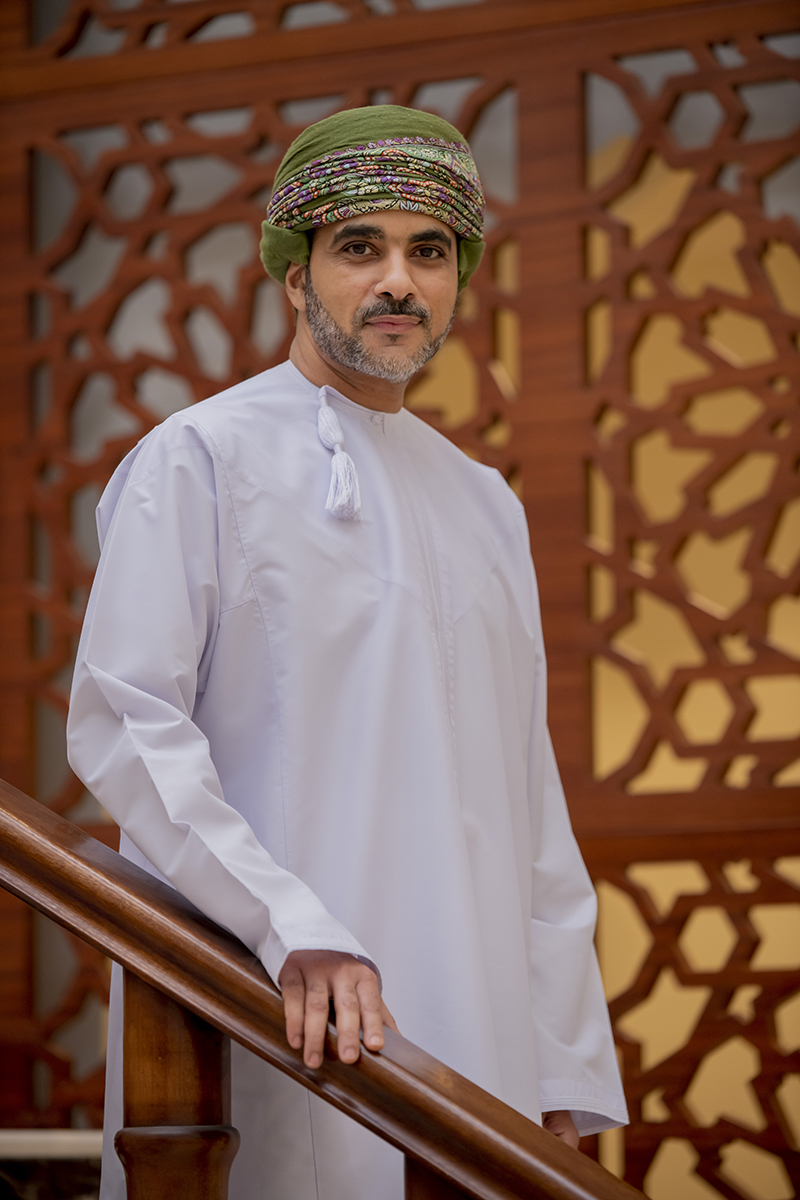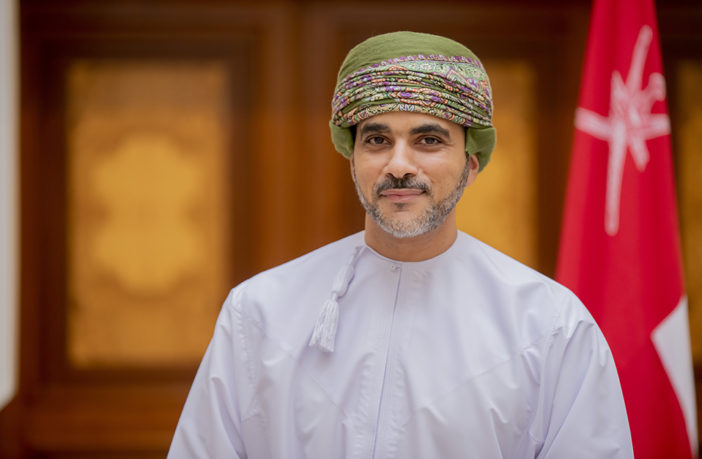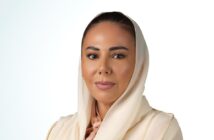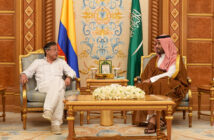Ambassador of Oman in Saudi Arabia
What are the main achievements and goals of the centuries-old relations between Saudi Arabia and Oman?
Oman and Saudi Arabia have a long-lasting historical relationship, including political, cultural, and social interactions. Over the past five years, the pace of development of bilateral ties has been changing, in line with Saudi Vision 2030 and Omani Vision 2040. Bilateral relations were also impacted by the 2020 global crisis, falling oil prices, and the death of His Majesty Qaboos bin Said, who has built a comprehensive relationship with Saudi Arabia and the Gulf Cooperation Council (GCC) for over five decades.
In terms of the achievements, I would like to discuss the road project, which began in 2016 and was recently implemented. Finally, both sides celebrated the official opening of the Empty Quarter Road, which directly connects Oman with Saudi Arabia. I consider this one of the most important successes and achievements of our joint efforts and cooperation.
Now, that His Majesty Haitham bin Tariq has ascended the throne, a new era has begun in bilateral relations with Saudi Arabia and Oman’s foreign policy as such. These changes in Oman are known as the “New Renaissance.” Saudi Arabia was the first country where HM Sultan Haitham made an official visit, and HRH Crown Prince Mohammed bin Salman completed a remarkable visit to Oman at the end of 2021.
What is the mission and vision of the Omani-Saudi Coordination Council?
The council oversees all aspects of cooperation – political, economic, cultural, to name a few. It will be a general umbrella that brings together all other committees and subcommittees to ensure that the goals and proposals of each sector represented as a priority for both countries are implemented and achieved as per written agreements.
This type of cooperation has become the model used by Saudi Arabia with many countries, ensuring that everything agreed and stipulated in the various memoranda of understanding (MoUs) and agreements are implemented, delivered, and executed perfectly. Compared to the experience of Saudi Arabia, this is the first time that Oman has such a coordination council, especially with Saudi Arabia. After hard work and immense joint efforts, it is finally approved, and all stakeholders are eagerly waiting for the first formal meeting of the Coordination Council, possibly in the first quarter of 2022.
How do you envision expanding mutual economic, social, and diplomatic alliances as part of Saudi Vision 2030 and Oman Vision 2040?
I see visions as a driver. Vision is the path to long-term end goals and short-term results. Visions define the goals for which people work and the path that must be taken to achieve those goals. Overall, Saudi and Omani visions are quite similar, and they are likely to be very similar even within the GCC, regardless of the time periods they are launched. Essentially, the visions are about building better communities and societies, empowering youth, providing better job opportunities, to name a few. Reflecting on Saudi Vision 2030 and Omani Vision 2040, I believe they have a lot in common in terms of expected results and goals to be achieved.
In Oman, and also, as far as I know, in Saudi Arabia, visions are divided into five-year periods. Thus, efforts should be made to achieve the goals of the five-year plan and assess the accomplishments before moving forward. These five years are broken down into an annual plan, since now even a five-year plan is considered long-term. My duty as an ambassador is to apprehend how much we can achieve in one year in improving Omani-Saudi relations and what significant projects can be implemented based on the agreements signed between the two countries. I believe that the true enablers will be platforms that have already been designed to serve the priorities identified in these visions.

What makes Oman an attractive destination for the global community?
Any destination is unique, memorable, and worth visiting for its people, above all. The tourism sector is growing and developing in both Oman and Saudi Arabia.
Ten years ago, Saudi Arabia would not have been considered an attractive tourist destination for the world community as it is now. In the minds and hearts of Arabs and Muslims, it would be the primary destination for Hajj and Umrah. However, over the past five years, Saudi Arabia has made every effort to be perceived not only as a place for pilgrimage, but also as a country with attractive tourist destinations worth exploring and experiencing. While most Omanis visit Jeddah, Mecca, and Medina, they should start traveling to Riyadh, as well. It is cosmopolitan, diverse, young, and unexplored for them that will allow to discover Saudi Arabia from another lenses.
Oman is the second-largest Gulf country with a long and rich history and if a Saudi or any other person visits Oman, they would find another added value in terms of the experience gained and memories. Oman has mesmerizing and gorgeous natural features gifted with lands, seas, deserts, and serene beaches. The country offers countless small experiences, big adventures, and unforgettable culturally unique discoveries.
Oman can not only be seen but also felt thanks to the nature, spirit, and simple yet precious generosity of the Omanis. For example, if one travels to Muscat, one would get different impressions within a 2–3-hour radius from north to south. These impressions will include both stunning views and people with their amazing and sincere way of interacting with the world around them and newcomers.
The Embassy of Oman is located in the Diplomatic Quarter. How does this contribute to the multi-lateral projects of the international offices in the DQ?
I would like to start answering this question by sharing my first impression upon arrival in the Diplomatic Quarter (DQ). When I entered the DQ, I noticed the immense size of the area that has existed for a long time and continues to evolve in its way. As an ambassador, I discovered how convenient is the area, allowing to hold more than five meetings a day. These meetings are not limited to regular “meet and greet” meetings, they are often lengthy discussions, and the proximity of foreign missions allows very productive and secure cooperation.
I should acknowledge the unique concept of the DQ contributing to the foreign policy of the Kingdom. I have learned that the number of DQ community is more than ten thousand people, which is quite sizeable. What I would like to know more about DQ is how management maintains the balance of a diverse community of diplomats, business community, and the general public. I am looking forward to learn more about the DQ development and being part of the community.
In addition to official meetings and celebrations of national days in the DQ, what connects the community of the DQ?
As you rightly pointed out, diplomats often meet only when there is an event or when a project needs to be discussed. However, I believe that the concept of the DQ aims to connect not only the diplomats but their families and representatives of the community by sharing hobbies and pursuits other than politics. I hope to be one of the participants in bringing people together from the diverse community of the DQ. This can ultimately lead to both successful diplomacy and thriving people-to-people connections.




